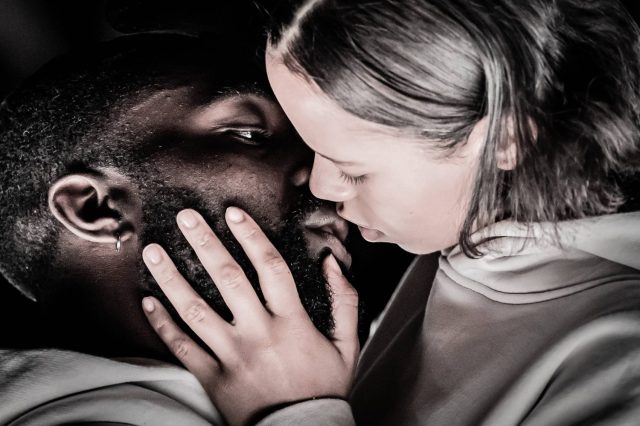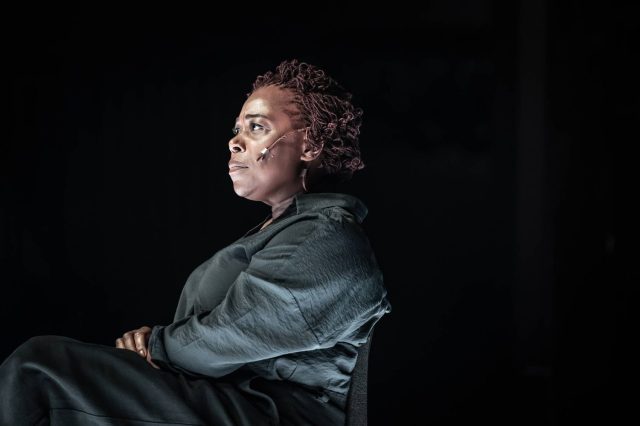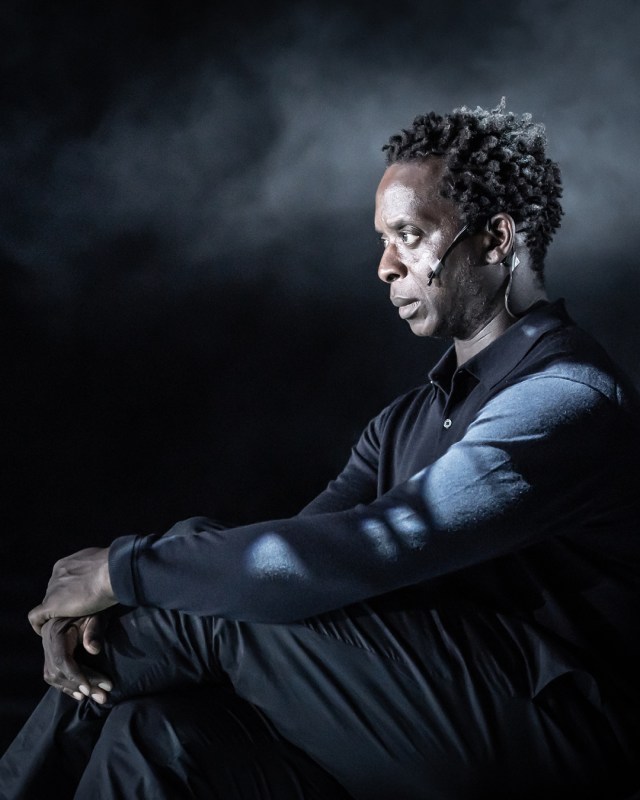Review: The Effect Asks, Is It Love or Is It Just the Drugs?
Lucy Prebble’s scintillating drama makes a London transfer to the Shed.

(© Marc Brenner)
Is that feeling of excitement you get when you’re attracted to someone really the first stirrings of love, or is it just a rush of dopamine flooding your brain? If we call it love, what happens when the rush is gone?
Those are a couple of the many questions raised in Lucy Prebble’s galvanizing play The Effect, now running under Jamie Lloyd’s sleek direction at the Shed (the production appeared last year at London’s National Theatre, where it also premiered in a different staging in 2012). Lloyd and Prebble have trimmed The Effect from its original two acts to a lean 100 minutes and made some changes to the characters’ backgrounds to get us thinking about the play in new ways. That’s the sort of thing you might expect from a smart writer like Prebble (an Emmy winner for her work on Succession), who’s less interested in providing answers than in raising questions we may not be comfortable asking.
The story centers on Tristan (Paapa Essiedu) and Connie (Taylor Russell), two participants in a monthlong antidepressant trial that puts them in near-constant contact with each other (Soutra Gilmour’s nondescript sweats and hoodies for Tristan and Connie seem designed to anonymize them). At first, they get on without incident, but soon they begin to feel a mutual physical attraction. Connie, a psychology student, is convinced they’re just responding to the antidepressant and the buzz it gives them. Still, as the dosages increase, so does their desire — and their confusion. “I can’t tell the difference between who I am and a side effect,” says Tristan.

(© Marc Brenner)
Observing them is Dr. Lorna James (Michele Austin), who has a history of depressive episodes; for her, the experiment is as personal as it is scientific. She once had a romantic relationship with her colleague, Dr. Toby Sealey (Kobna Holdbrook-Smith), but now he has some doubts about her job performance. Is she up to the task of evaluating the effect that the drug is having on Tristan and Connie, or is she getting too close to her subjects to be objective?
Lloyd, who directed last season’s A Doll’s House, brings his modernist sensibility to this production, with an intimate traverse stage that creates the sense of us looking through a one-way mirror into an observation room (set design also by Gilmour). Jon Clark fills the confines of the space with frenetic lighting that simulates the synaptic flashes zapping away through Connie’s and Tristan’s brains, while George Dennis’s menacing sound design swells with the rising tension and amplifies Michael “Mikey J” Asante’s at-times aggressively loud music.
The performances match the excitement of the stagecraft. Russell and Essiedu create heart-racing chemistry as Connie and Tristan begin losing control of their emotions and make bad decisions while under the influence of powerful drugs/emotions. Austin does a terrific job balancing Lorna’s reservations about Toby’s Big Pharma interest in the drug (“There’s no such thing as side effects,” she says to him accusingly, “they’re just effects you can’t sell”), and about seeking treatment for herself. Holdbrook-Smith cagily bamboozles everyone, including us, into mistaking Toby’s motives for scientific integrity. In a clinical trial, is there anyone you can trust?

(© Marc Brenner)
That last question takes on new meaning in this production, which features a cast of Black actors in all the roles (previous London and New York productions featured white actors). Prebble has adjusted the script to reflect this decision: Tristan, for example, no longer does an Irish step dance to woo Connie but rather a hip-hop-style move created by Essiedu.
The changes work, and attest to the universal emotions and ethical dilemmas of the play, but they also put the characters under a different set of cultural and political pressures (“I’m a working-class Black woman,” Lorna now says to Toby. “Getting out of bed is a political act!”). Is Lorna employed in an environment that, despite appearances, might be biased against her for her race and/or her gender? And are Lorna, Tristan, and Connie nonconsensual subjects in a deceitful experiment? A twist near the end of the play compels us to ask these questions.
By the end, we can’t help wondering if Connie and Tristan actually have fallen for each other. It’s another question that never gets an answer. But whatever it is that keeps a person by your side once the drugs wear off — that just might be, the play suggests, the thing we call love.









